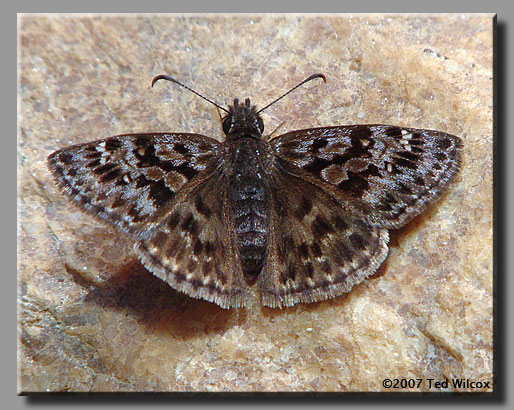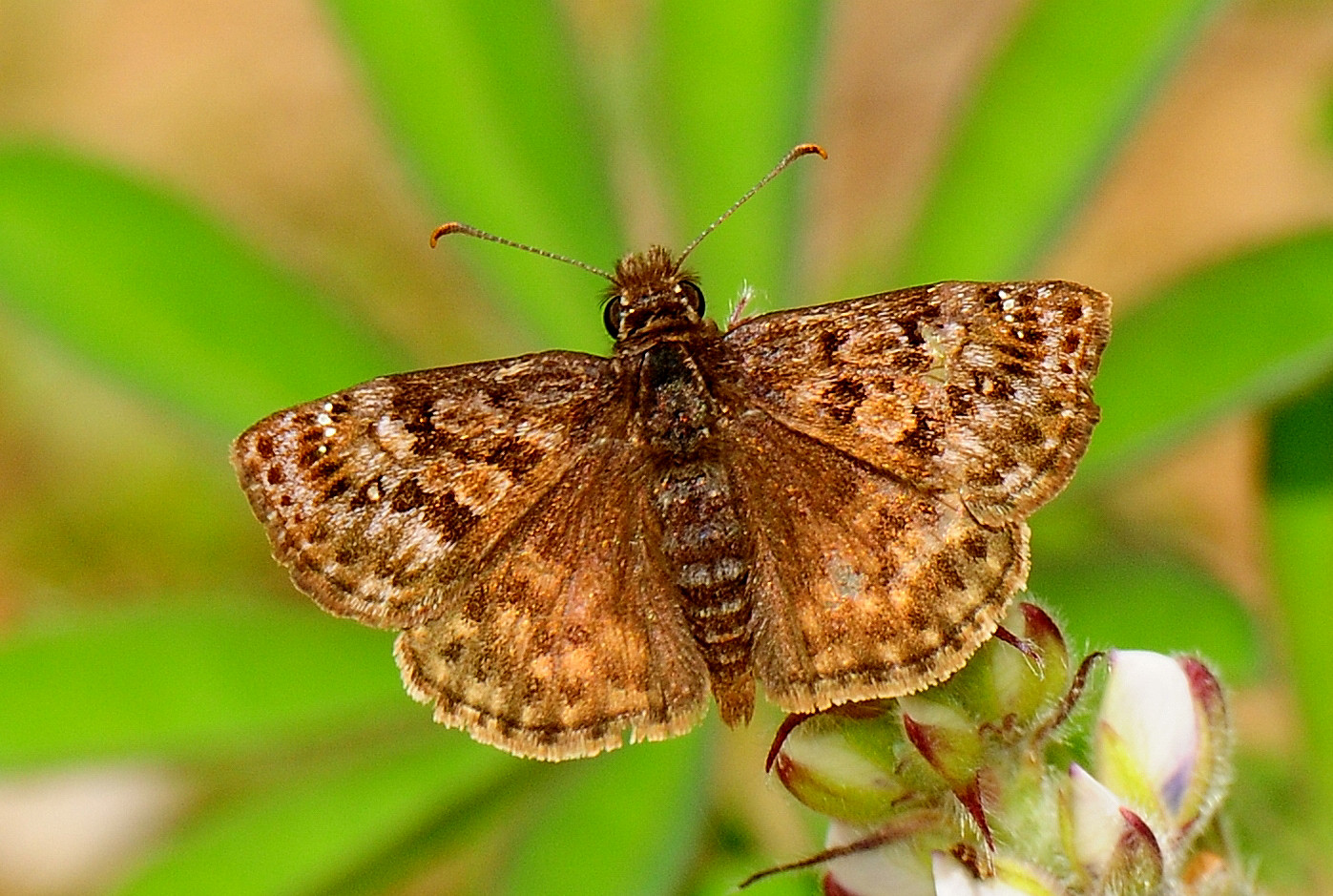|
| Common Name | Mottled Duskywing by Ted Wilcox => 05/12/05 ? Ashe County, NC ? female
[View PDF]
 Click to enlarge Click to enlarge
[Google Images] GBIF [Global Distribution ] BoA [Images ] iNaturalist |
| Scientific Name | Erynnis martialis
|
| Link to BAMONA species account. |
| Map | Click on a county for list of all database records for the species in that county.
 |
| Distribution | DISTRIBUTION: Found at scattered sites in all three provinces, but just two known records for the northern half of the Mountains. Just one recent Coastal Plain record away from the Sandhills, and no records at all from the northern half of the Coastal Plain. Thus, at present, essentially just the Mountains and sparingly in the Piedmont, though it still should occur in parts of the western Coastal Plain/Sandhills.
|
| Abundance | ABUNDANCE: Rare in the southern half of the Mountains and adjacent Piedmont foothills; strongly declining in nearly all of the Piedmont, where now very rare, with few recent records. Very rare in the northern Mountains, as well as the Sandhills. Seemingly absent from most of the Coastal Plain. The species is certainly in decline, as there are scattered counties with the last observation being more than 20 years ago, especially near the coast. And, despite all of the observers in the state these days, the fact that there were no reports in 2007, 2008, and 2009 is quite indicative of a decline. Fortunately, the only two reports in 2010 were from mountain counties (Clay and Graham) with no previous records, "filling in" gaps in the range map. Interestingly, all five reports in 2012 came from the Mountains, as did all four reports in 2013 and again in 2016, all nine records in 2017, and all four in 2018. Most recent records have come from one game land area in Buncombe County, another site in Madison County, and a foothills game land in Rutherford County.
|
| Flight | FLIGHT PERIOD: Two broods, with the first almost certainly the larger of the two. The first brood in the Coastal Plain is mainly in April (and probably into May); the second is in late June and into July. The Piedmont flight periods are from mid-April to mid-June, and most of July. In the Mountains, it flies from the first half of April (rarely in late March in recent years) to early August, though it isn't clear if records from mid-June are from the first brood or the second brood.
|
| Habitat | HABITAT: The species is fairly habitat-specific; it is seldom far from New Jersey Tea (Ceanothus americanus). Habitats are typically the margins of upland hardwoods or mixed woods, or open dry woods. Dirt roads through upland woods, or the drier portions of powerline clearings, are favored sites, as long as New Jersey tea is nearby.
|
|
| | Plants | FOOD AND NECTAR PLANTS: As mentioned above, New Jersey Tea appears to be the sole foodplant in the East. The species nectars on this plant, as well as other flowers. As with other duskywings, it is regularly seen on dirt roads and trails, more so than on flowers.
|
| Comments | COMMENTS: This is an excellent find for the butterfly watcher, and it is the easiest of the duskywings to identify; otherwise, it might never be conclusively found by the observer! Fortunately, it is found in very close proximity to New Jersey Tea, and this plant is conspicuous when in bloom in late May and June. The species is seldom found in numbers/colonies; almost always just a single individual (or rarely two) is found in a day. Most of my roughly 12 records in NC have been of singletons, often seen basking on dirt roads, in danger of being run over by speeding vehicles. In fact, I suggest that the increasing amount of traffic on dirt roads might be leading to greater mortality of this rare butterfly and hastening its decline.
Richard Anderson's butterfly database from his work at Fort Bragg (now named Fort Liberty) a few decades ago pushed our Coastal Plain flight dates from one (as of 2001) to nine, with a tenth added in 2004 for Wayne County. All of the Coastal Plain data (but one record) refer to the Sandhills region.
|
State Rank | S2 | | State Status | SR |
Global Rank | G3 | | Federal Status | |
| Synonym |
|
| Other Name |
|
|
|

 >>
>>



